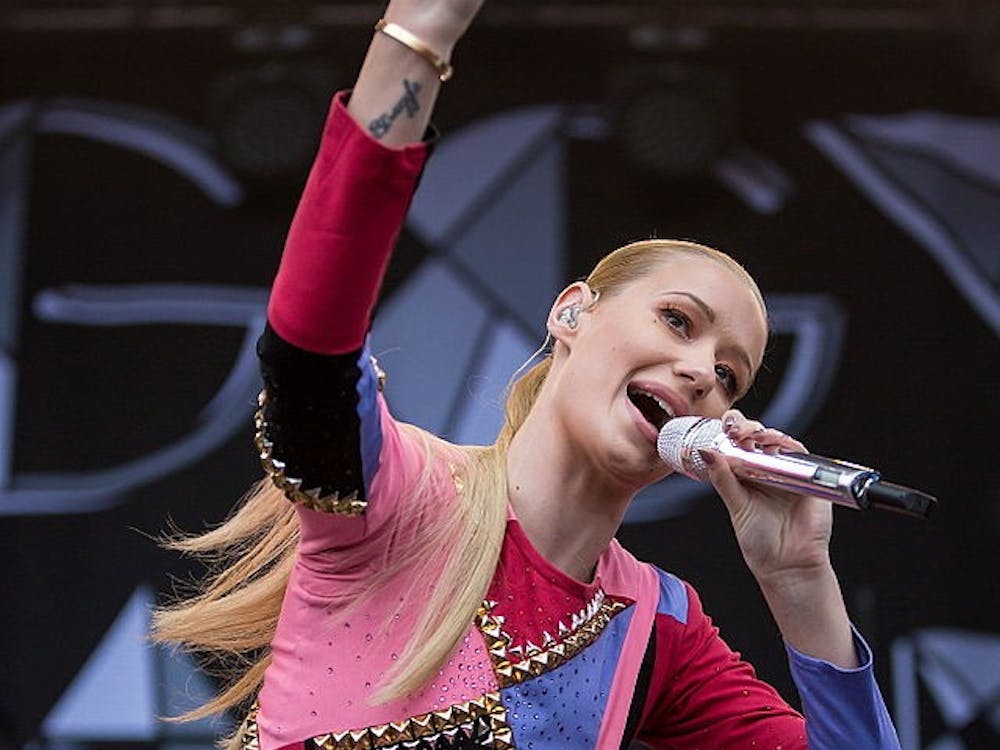As I sat in the Paramount Theater last Friday, surrounded by children 12 years younger than me, I was reminded of my childhood. Little responsibility and a princess obsession led me to watch and re-watch Disney’s “Aladdin” until I knew every word to “Friend Like Me.” Even now, my captivation with the classic tale of a beggar and a genie continues, allowing me to thoroughly enjoy the Enchantment Theatre Company’s original production of “Aladdin and Other Enchanting Tales.”
Though the elephants, tigers and parrots of the childhood film weren’t present, Aladdin’s powerful storytelling was. This show featured various fables, each under the narration of Scheherazade — a woman trying to save her brother from execution by the Sultan. She tells stories ranging from Sinbad to Aladdin and, in doing so, saves the life not only of her brother, but of the Sultan as well. In each story, the Sultan transforms into the central character and through this learns lessons of forgiveness, compassion and love.
To illustrate the magic of storytelling, magic tricks were appropriately a main element of the show. Throughout the performance, I heard young children whisper, “How did they do that?” and at times, I asked the same question. In one sequence, a woman was lifted off the stage and balanced on three swords. Other actors then removed two swords so she was suspended by only one under her head. In other scenes, a snake popped out of a small box, colorful scarves emerged from actors’ hands and a magical egg suddenly appeared on stage. These illusions entertained, perplexed and surprised the young audience.
Although the production was geared toward children, it impressed older audience members as well. One of most remarkable features of the performance was the sheer number of characters — all played by six actors. Throughout the show, this small handful of performers flawlessly achieved quick costume changes and expertly choreographed staging. Even more impressively, the actors told the stories using only pantomimes and gestures. Set to the music of Russian composer Nikolai Rimsky-Korsakov, each tale was told by music and a recorded narration provided the only spoken lines.
In accompaniment with the magic and music, costumes were a key factor in bringing the production together. From the start, actors wore vibrant and shimmering clothing, leaving behind any prospect of a dull performance. Their costumes and puppets had a level of unpredictability — it was always a surprise to see what would emerge from the curtain next.
In Sinbad’s tale, a giant Cyclops filled the stage with terror, and in “Aladdin,” the powerful genie stood at more than 10 feet tall. Contrasting these large-scale puppets were smaller ones, representing children, butterflies and a flying carpet. No matter the size, the puppets and costumes brought the production to a new level and allowed the audience to visualize Scheherazade’s tales.
After spending an hour immersed in the performance, I was brought back to reality and reminded that all of that magic had been performed by just six people. It’s humbling to know that behind the fanciful magic tricks, shiny costumes and elaborate puppets are a handful of ordinary people bringing smiles and laughter to children. I might’ve been one of the few college students there, but that didn’t make the show any less enchanting.






